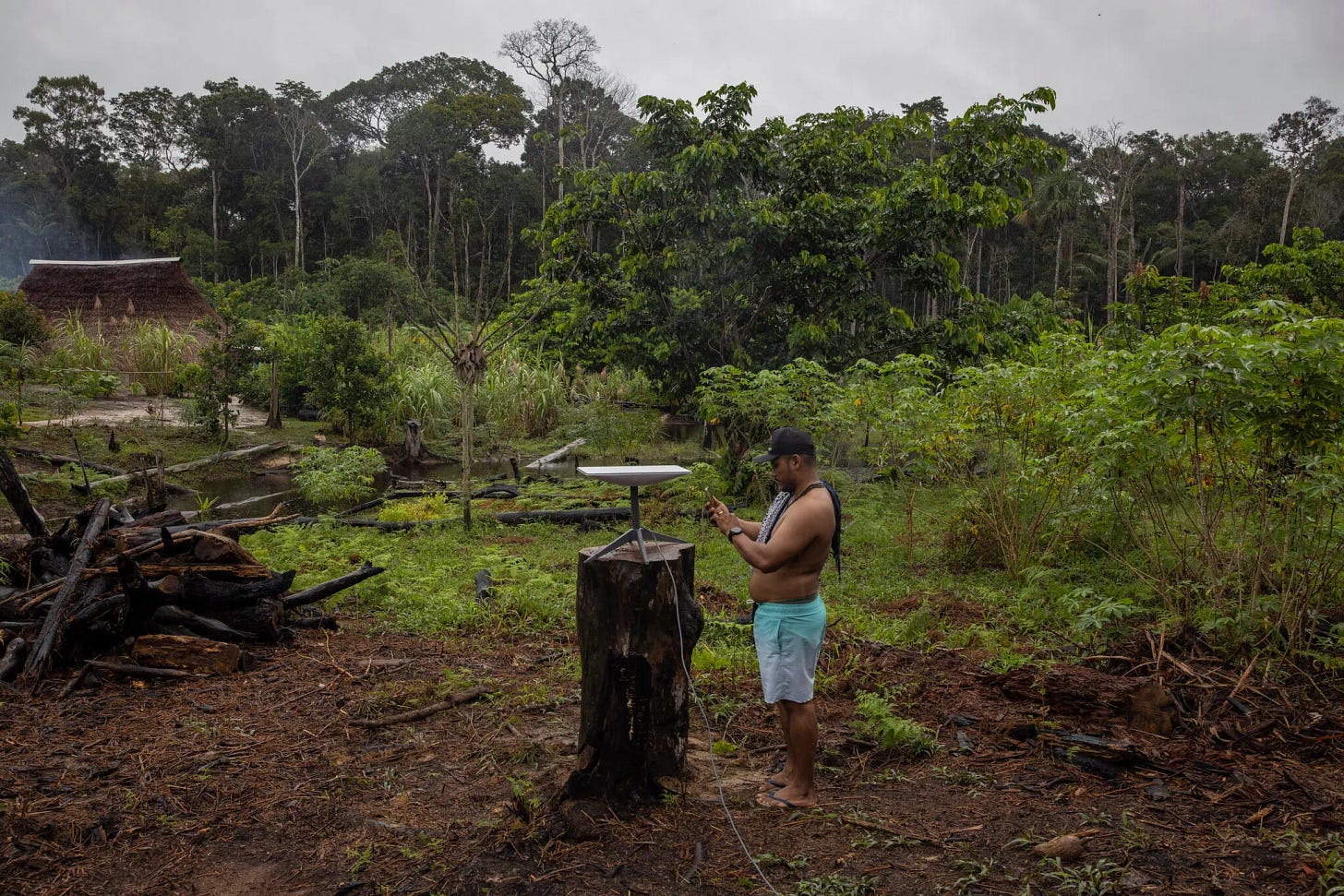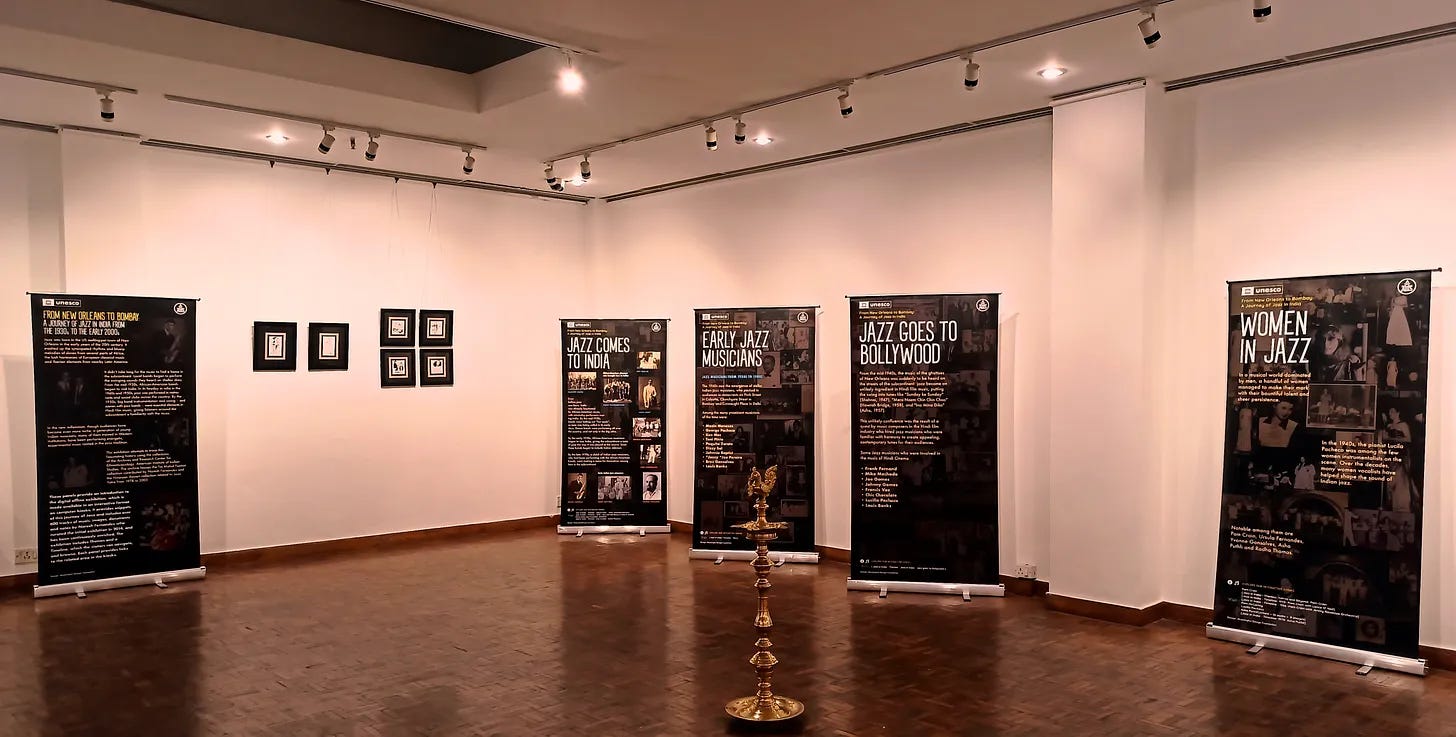Weekly Groundings are published every Friday to highlight the most interesting news, links, and writing I investigated during the past week. They are designed to ground your thinking in the midst of media overload and contribute to Handful of Earth’s broader framework. Please subscribe if you’d like to receive these posts directly in your inbox.
“Four Years After COVID, Cancel Culture Returns”
In a guest opinion column at
’s Substack, and demonstrate the incredible similarities in the cancel culture strategy deployed by the left during the pandemic and by the right during Israel’s war on Gaza: During the pandemic, “a quasi-priestly, self-appointed expert class suddenly dictated the boundaries of acceptable discourse on COVID-19 in a mostly successful effort to control our thoughts on the subject. We weren’t allowed to openly question whether school closures would lead to learning loss, especially among less economically privileged students; whether firing people for declining a rushed and, as it turned out, less-than-entirely-efficacious vaccine was an abrogation of workers’ rights; or whether shutting down the economy would hurt working people most of all. To even raise these concerns in polite company, as we both did, led to accusations of selfishness, support for former President Donald Trump, and eventual exile from the circles in which we ran. We watched the activist left descend into a mindless, totalitarian cult, in which the punishment for wrongspeech and wrongthink was the social equivalent of the death penalty.”Woodhouse and Younes continue: “History repeats itself, a harsh lesson we both learned firsthand not four years later. Since October 7, we have found ourselves once again watching people we befriended and came to admire during the Covid era embrace a blind dogma that replaces evidence, civil discourse, and logic with censorship, bullying, and accusations of antisemitism designed to chill dissent. This time, though, those engaging in these rhetorical tactics have clustered on the political right, as well as in the ‘heterodox’ space that purports to transcend the tribalism of the left-right divide and with which we both briefly identified.”
For more on this topic, see my articles, “The ‘Free Speech’ Right Embraces Cancel Culture” and “In Defense of Woke Zoomers.”
“Private Thought and Public Speech”
On a related theme,
draws on the “intuitive and too seldom noticed points of ordinary psychology” to address the relationship between private thought and public speech at Compact Magazine: “The truth is that many people first discover the depth of a given belief, or even the fact that they hold the belief at all, when they hear its opposite enunciated and find themselves saying No. We may say no at first to ourselves. But I think an early experience of saying no, out loud, is for many people their first intimation of self-knowledge. It can be a starting point, too, for a kind of social knowledge that in more graduated terms will lead to a patient involvement in public arguments that have more than one side. Those arguments are conducted in a mode of speaking and listening in which it is possible to hear sentences such as ‘Why do you put it like that?’ or ‘Can you remind me of the evidence?’ The radical and self-formative power of hearing oneself say no, often for reasons one could hardly explain initially, seems elemental in our moral nature. It is, in fact, as vital to the growth of conscience as the act of willful disobedience about which one is later compelled to reflect with an uneasy mind.Bromwich concludes with reflections on how social media has impacted the relationship between private thought and public speech: “Others have warned against the conformist pressure of social media; but the pessimistic prognosis can’t be repeated too often. For all the advantages they bring, in the form of a quick, free, and wide diffusion of new facts or presumed facts, social media have become a tacit and in some measure paralyzing influence on free inquiry, not only in education but in less purposeful social settings. Universities, in particular, ought to take a public stand against the dulling-down of spirited conversation that has been an unintended consequence of the presence of social media. The possibility of being misquoted, or quoted and characterized misleadingly, is a constant presence in the minds of most students and many teachers. The pervasive known presence of social media makes the anonymous report a likely channel of reward or of dangerous rebuke. It seems in the interest of education, more broadly, to discourage the use of either signed or anonymous reports on the non-public utterances of other people. The cost of having ignored this encumbrance of being watched and unkindly overheard without our permission has been a drastic reduction of the natural energetic contact between private thoughts and public speech, which is to say: a loss of the virtue of sincerity, without which all thought and all speech are worthless.”
For more on issues of speech, see my two-part essay, “Why Free Speech?” (You can read Part 1 here and Part 2 here).
The Internet’s Final Frontier: Remote Amazon Tribes
The New York Times reports on the introduction of the internet to the Marubo tribe in the Amazon: “The 2,000-member tribe is one of hundreds across Brazil that are suddenly logging on with Starlink, the satellite-internet service from Space X, [Elon] Musk’s private space company. Since its entry into Brazil in 2022, Starlink has swept across the world’s largest rainforest, bringing the web to one of the last offline places on Earth.”
The internet was brought to the Marubo by an American woman named Allison Reneau, who describes herself as “a space consultant, keynote speaker, author, pilot, equestrian, humanitarian, chief executive, board director and mother of 11 biological children…[who] makes most of her money coaching gymnastics and renting houses…” Assisting her is a Brazilian “activist,” Flora Dutra, who“now has a goal to bring Starlink to hundreds more Indigenous groups across the Amazon, including Brazil’s largest remote tribe, the Yanomami.”
The original reporting is well worth reading in full. The greatest benefit the internet-pushers can point to is the ease of receiving emergency support in instances of snake bites. Beyond that, the Marubo now have to deal with “teenagers glued to phones; group chats full of gossip; addictive social networks; online strangers; violent video games; scams; misinformation; and minors watching pornography.” One tribal leader reports that “young men were sharing explicit videos in group chats, a stunning development for a culture that frowns on kissing in public. ‘We’re worried young people are going to want to try it,’ he said of the graphic sex depicted in the videos. He said some leaders had told him they had already observed more aggressive sexual behavior from young men.”
“Return to Janesville — Life After Manufacturing in America’s Heartland”
At The Financial Times, Amy Goldstein reflects on her 2017 book, Janesville, about the deindustrialization of a Wisconsin town in the wake of a General Motors plant closure in 2008: “Falling out of the middle class, I learnt, is not the same as having been poor all along, bruising people’s identity along with their standard of living. Job retraining, I found, was not always a panacea. And as the 2016 election cycle was bringing Donald Trump to the fore, I saw the kind of post-industrial distress that was attracting voters elsewhere to his flavour of populism — even as Janesville remained a Democratic-leaning union town.”
Goldstein continues: “Now, seven years after my book Janesville came out, as the rain clattered on my rental car, I wondered what lessons this place might yield about the US economy and communities’ hopes in today’s starkly different time.” While unemployment numbers had improved, the GM plant, “the centrepiece of the town’s industrial identity for nearly a century remains vacant and scarred.” In Janesville today, “Almost none of the jobs added in town lately are unionised and so lack the generous benefits — including days off for hunting season — that GM furnished. Wages are another matter. Even today…fewer than a thousand people in town are earning around the $28 an hour that GM was paying back when the plant closed. And while wages have been rising recently, inflation has been tempering the practical value of such gains, the way it has around the country.”
“Oregon is Facing Largest Energy Development Threat in Generations”
writes about a massive offshore wind turbine project proposed off the coast of Oregon at . The project will entail “dozens or hundreds of steel towers, each as tall as the Empire State Building, each floating on a steel platform the size of a baseball stadium and anchored to the sea floor with hundreds of miles of steel cables and chains as thick as a human body.”Besides the environmental degradation required to produce the industrial inputs for the turbines, Wilbert notes that “the most terrifying possibility is that building these wind turbines to capture wind energy modifies ocean currents that drive the upwelling of nutrients….This is one reason why the Yurok Tribe, Bear River Band of the Rohnerville Rancheria, Cher-Ae Heights Indian Community of the Trinidad Rancheria, Confederated Tribes of the Coos, Lower Umpqua, and Siuslaw, and the Tolowi Dee-ni’ Nation have passed resolutions opposing all offshore wind energy projects in Oregon and California, and why the National Congress of American Indians has called for a moratorium.”
The irony is that this massive turbine project is being justified in the name of stopping global warming, demonstrating the blinkered view of the trendy climate activist movement. Meanwhile, the crisis of the sea, documented in excruciating detail by coral reef ecologist Jeremy Jackson in his 2010 Ted Talk, “How We Wrecked the Ocean,” gets little if any media attention.
“Notes from a Jazz Exhibition”
reports on an exhibition entitled, “From New Orleans to Bombay: The Journey of Jazz in India from the 1930s to the Early 2000s,” showcased at the India International Center last month in Delhi, India. The “exhibition traces the genre's history, with Jazz musicians traveling from New Orleans in the U.S. to the Indian subcontinent. It traces through different nodes in this map: the early pioneering African American musicians, Jazz’s entry into Bollywood, Women in Jazz, and Jazz yatras – Indo-African-American-Music Festivals (from 1978 to 2003). The last node is significant as it is partially the raison d'être for the exhibition and constitutes most objects.” My academic research is currently focused on the history of jazz in India, so it was great to see this exhibition covered here on Substack.
What grounded your thinking this week? Feel free to share in the comments.








Hi Vincent, didn't realize you were here on Substack. Good to read your work here, and thanks for sharing!